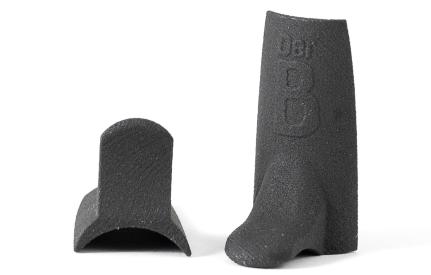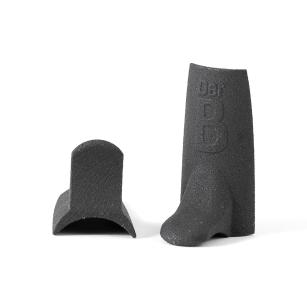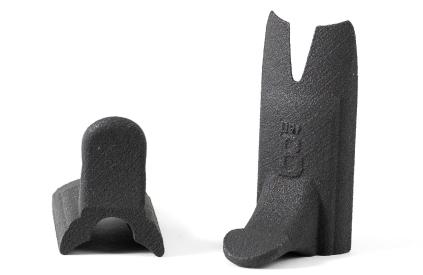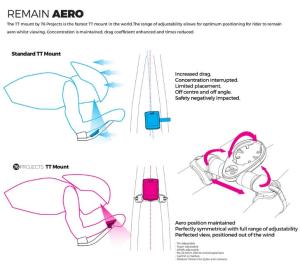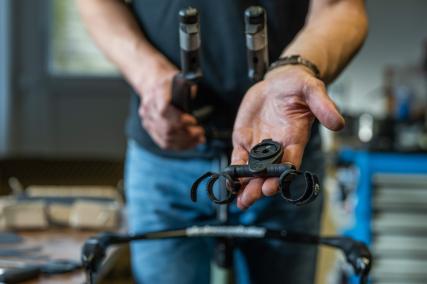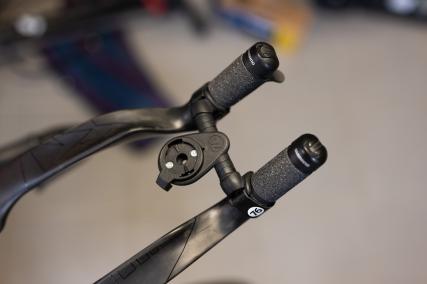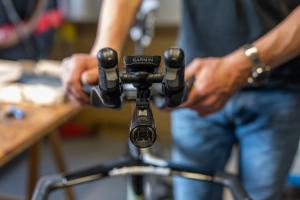
Baranski Grappling Hooks and 76projects Computer Mounts
29.08.23 07:50 3182023-08-29T07:50:00+02:00Text: Der Baranski (translated by AI)Photos: Bernhard Steinacher/Sportograf (KOTL 2022), Class Spiegelberg (Hannover), 76projects, Der BaranskiDig in properly and always keep an eye on the watt display: Baranski's grappling hooks for aero handlebars and the modular computer mount from 76projects. Two sensible and affordable gadgets for use at the cockpit - and precisely where it counts: upfront and fully in the wind.29.08.23 07:50 5302023-08-29T07:50:00+02:00Baranski Grappling Hooks and 76projects Computer Mounts
29.08.23 07:50 5302023-08-29T07:50:00+02:00 Der Baranski (translated by AI) Bernhard Steinacher/Sportograf (KOTL 2022), Class Spiegelberg (Hannover), 76projects, Der BaranskiDig in properly and always keep an eye on the watt display: Baranski's grappling hooks for aero handlebars and the modular computer mount from 76projects. Two sensible and affordable gadgets for use at the cockpit - and precisely where it counts: upfront and fully in the wind.29.08.23 07:50 5302023-08-29T07:50:00+02:00Rocket Science Aero-Cockpit?
Until a few years ago, all aero handlebars somehow looked alike. There was the base handlebar including brake levers, the armrests, and the extensions with the shift levers attached. Whether made of aluminum or carbon, price-wise it was all somehow manageable and most parts also fit all bikes with the standard 1 1/8" fork steerer. Meanwhile, every bike manufacturer that values itself and can produce the corresponding numbers has a proprietary cockpit on their triathlon or time trial bike. Shifting is electronic, and what used to be available for a few hundred euros as a handlebar now always costs four figures and only fits this one bike.
Cross-compatibility? Excluded.
A level above that are the tuning components such as special extensions, armrests, or even individually customized cockpits. Regardless of whether they are laminated from carbon or printed from titanium, there is no upper limit to the price. The benefit in terms of "additional time saved" is, in most cases, homeopathic - or rather, expensively purchased "marginal gains". Apart from the fact that such things are not only limited to one model of bike but also only fit one athlete in one position - there's nothing more you can adjust from there. And just by the way: If an imported carrying part and/or absolute unique piece from the UK or USA from the tinkerer's production then gives up the ghost, it remains to be seen who will take responsibility for it. Not to mention that more than one tuning enthusiast had to stumble over import sales tax and customs, which made the pleasure even more expensive.
Not relevant for most of you, but still worth thinking about: The UCI has precise specifications on how large and extensive handlebar components can be and also that no one-piece variant is allowed, but there must be two separate extensions. In the future, this will become even more complicated, as not only frame sets but also cockpit parts will need an individual UCI logo, and then custom-made items will no longer be allowed.
Tuning on a small scale also makes a difference!
It is possible to approach it differently, by considering one's position and how one can fine-tune it to maintain it as well as possible and without limitations over the full distance. This is because the rider, and specifically their frontal area, is what costs the most watts and where, therefore, the most can be achieved. The biggest advantage, besides the aero gains: It doesn't immediately cost a fortune.
A rewarding gadget is the grappling hooks for aero handlebars from Baranski.
Baranski's Grappling Hook 2.0 for Aero Handlebars
The idea, of course, came while cycling, specifically when the going got so rough on bumpy trails and bad asphalt that it blew one's hand off the extensions. It became clear that something like a barb would be useful here, as it would simply provide more grip for the clenched fist's involved fingers. By the way, Baranski has been using plain grip tape from skateboards on the effective grip area for years, which can also be gripped well with wet, slippery fingers.
To sit as long as possible, which is often aerodynamically better than sitting too short, the Baranski Hooks also offer the opportunity to gain a bit more seat length by gripping with just the middle or ring finger, by moving slightly forward - or by gripping between the index and middle finger to have maximum power, for example when pushing a heavy gear uphill in Aero position or going really fast downhill and needing full control over the cockpit. Death Grip on the aero handlebars? Also possible!
Different grip options
In high-speed sections, these little friends also help to consciously go into the "Shoulder Shrug," which means really pulling your head between your shoulder blades, which is great when it gets really fast. If you do it right, you feel like you're logged in between the contact point of the saddle at the back and the cockpit at the front.
If you make a big fist with your hands instead of two, you can also play with an asymmetric arrangement of the two hooks, thus always adding reinforcement for the fist wherever you like. The wind won't see it from the front anyway, and in this case, one hand inevitably always grips a bit shorter than the other.
The grappling hooks are now available in two options:
Baranski Grappling Hook 1.0 for the classic mechanical shift levers and the first generations of electronic shift buttons with external wiring.
Baranski Grappling Hook 2.0 for fully internal shift buttons like the SW-R9160 from Shimano or the eTap Clics from SRAM. The grappling hooks are "Made in Germany".
Assembly
The assembly is incredibly simple. Place the hook flush with the respective shift lever or button on the extension, secure it with ideally black Duct Tape (which also holds up great here and is a must-have in every workshop anyway), and apply a layer of cut-to-size grip tape or handlebar tape over it. By the way, the grip tape is included in the delivery. Those who install the version for mechanical shift levers can ensure a cohesive finish with two cutouts in the grip tape as well.
Assembly Photo Gallery
And for example, someone who rides a Canyon Speedmax, where at this point rubber covers from Ergon are installed instead of handlebar tape, can simply slide the grappling hooks under here and fix them with tape.
A small, but fine detail, which one might need to experience first... but then it won't disappear from the cockpit so quickly anymore.
Conclusion Grappling Hook76project TT Race Mount 2.0 Computer Holder
Another component that is often somewhat neglected is the computer mount on aero handlebars. With some solutions, one actually gets the impression that something was hastily rigged up just before setting off to somehow attach the Garmin, Wahoo, etc. - and all too often, the device is mounted so far back that the rider has to lower their head every time they look at it, thus positioning the tail of the aero helmet straight into the wind. This is aerodynamically unwise and also dangerous because, in that moment, one loses sight of the road and the traffic.
However, this doesn't have to be the case if the computer is mounted far in front between the hands or directly below. This can be well addressed with the TT Race Mount 2.0 by 76projects from the UK.
This holder is modular in design. It can be precisely adjusted to the distance of the extensions and the desired inclination using spacers and thanks to its ratcheted clamping, for instance to prevent the display from reflecting. It is then secured on both sides with a strong Velcro strap, which fixes two plastic holders onto the tube. However, since it only makes contact with the extension through a quarter-round, it also fits oval and other special shapes.
Moreover, the computer can be rotated so that it is easily readable in the Aero position. With particularly narrow extensions, twisting the computer into place via a bayonet fitting can be a problem, for which the holder can be extended with a “No Turn” insert, where only a small lever needs to be flipped to lock it in place and the entire computer does not need to be rotated 90 degrees.
And for those who ride with lights, a Go Pro, or aerometers like Notio, the mount can be extended downwards to accommodate such devices.
The British have also considered extremely tight setups - the mount can be installed down to a center/center extension width of 65 millimeters.
You can find both parts, along with many other high-speed vehicle accessories, at derbaranski.shop
Modular gadget for more aero, more safety, and a custom-fit and neatly organized cockpit.
Conclusion TT MountWho the fuck is Der Baranski?
Baranski has been riding aero bars for over 20 years and has seen plenty of trends come and go, some narrowly missing the mark of nonsense, while others have indeed broken new ground. He works as a reviewer for the magazine triathlon, and what he currently rides unbranded across the North German plains, might - perhaps - enter mass production in a few months.
In parallel, he runs the derbaranski.shop, focuses intensively on the topic of chain tuning, and has recently published the second edition of his book "Cycling in Triathlon and Time Trials", which is all about speed riding on aero bars. Athletically, he has won the "King of the Lake" and the Monster Time Trial among others and continues to compete with amateurs in time trials as a master. By the way, Baranski has a first name: Marcus.





